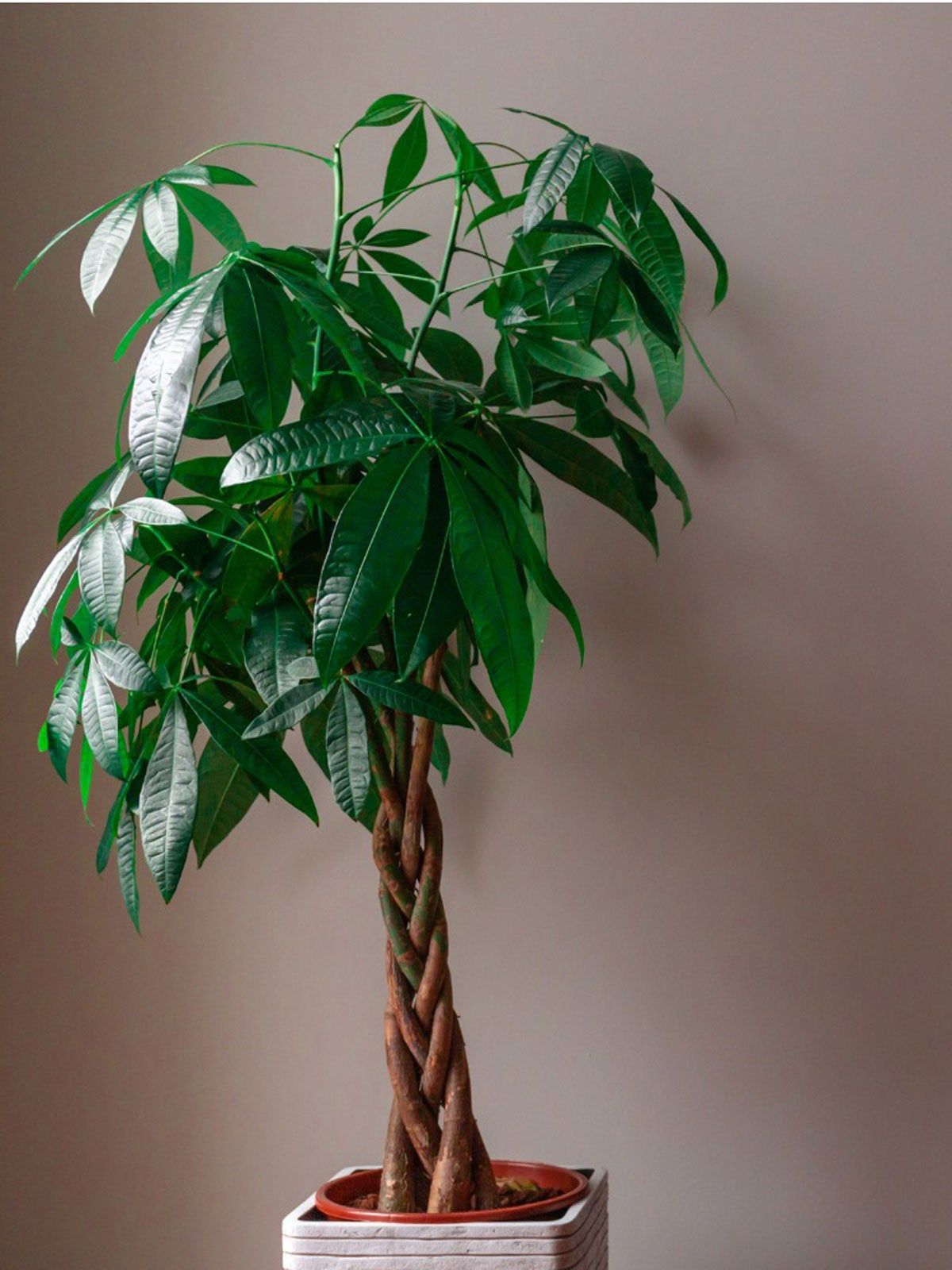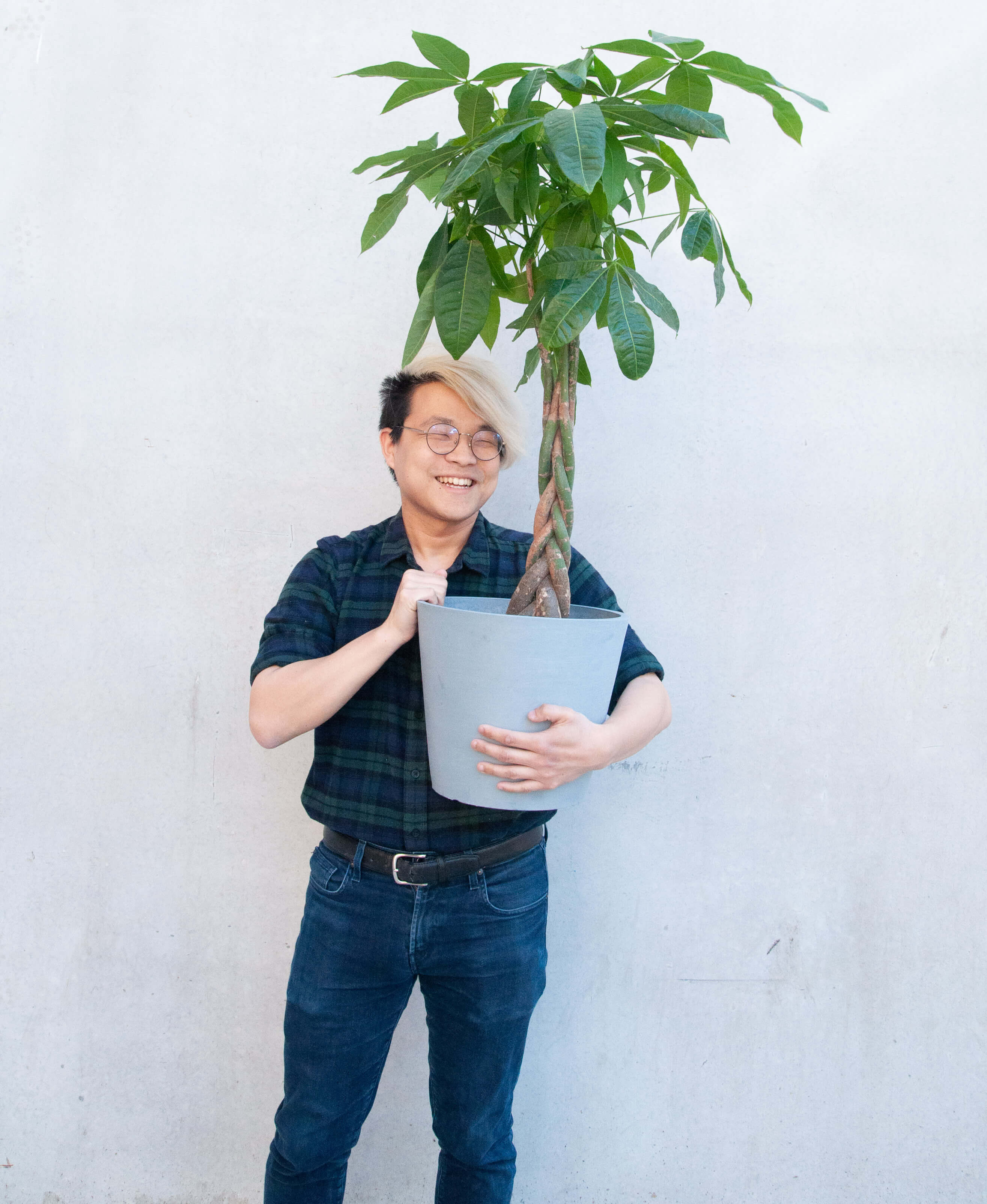“`html
The Comprehensive Guide to Money Tree plants
The Comprehensive Guide to Money Tree Plants (Pachira aquatica)
The Money Tree, scientifically known as Pachira aquatica, is a popular houseplant celebrated for its distinctive braided trunk and lush, vibrant foliage. Beyond its aesthetic appeal, it’s believed in Feng Shui to bring good fortune and prosperity, making it a cherished addition to homes and offices worldwide. This comprehensive guide delves into every aspect of caring for a Money Tree, from its origins and symbolism to practical tips for ensuring its health and longevity.
Origins and Symbolism
The Money Tree is native to the swampy regions of Central and South America, particularly in areas like Mexico and Brazil. In its natural habitat, it can grow into a large tree, reaching heights of up to 60 feet. However, when cultivated indoors, it typically remains a manageable size, making it ideal for home environments. The braided trunk, a hallmark of the Money Tree, is often created by weaving together the stems of multiple young plants. This practice not only adds visual interest but also enhances the plant’s symbolic significance.

In Feng Shui, the Money Tree is associated with the five elements: wood, water, earth, fire, and metal. The braided trunk represents the earth element, while the leaves symbolize wood. The water element is reflected in the plant’s need for moisture, and the fire element is represented by its vibrant green color. The inclusion of coins or other metallic objects in the pot symbolizes the metal element. This combination of elements is believed to create a harmonious balance that attracts positive energy and financial abundance.
Selecting the Right Money Tree
When choosing a Money Tree, look for plants with healthy, vibrant green leaves and a sturdy, well-braided trunk. Avoid plants with yellowing or brown leaves, which can indicate stress or disease. Inspect the trunk for signs of rot or damage, and ensure that the plant is securely potted.
Size and Shape
Money Trees are available in various sizes, from small tabletop plants to larger floor specimens. Choose a size that suits your space and preferences. The braided trunk can also vary in thickness and complexity, with some plants featuring elaborate weaves. Consider the overall shape and structure of the plant to ensure it complements your interior decor.
Potting and Soil
Select a pot that is slightly larger than the current one to allow for root growth. Ensure the pot has drainage holes to prevent waterlogging, which can lead to root rot. Use a well-draining potting mix that is rich in organic matter. A blend of standard potting soil, perlite, and peat moss is ideal for providing the necessary aeration and moisture retention.
Caring for Your Money Tree

Proper care is essential for maintaining the health and vitality of your Money Tree. By providing the right conditions and attention, you can ensure that your plant thrives and brings positive energy to your home.
Light Requirements
Money Trees prefer bright, indirect light. Direct sunlight can scorch the leaves, while insufficient light can lead to leggy growth and reduced vigor. Place your plant near a window that receives filtered sunlight, such as a north- or east-facing window. If you don’t have access to sufficient natural light, you can supplement with artificial grow lights.
Watering
Watering is a crucial aspect of Money Tree care. Allow the top inch of soil to dry out between waterings to prevent overwatering. When watering, thoroughly saturate the soil until water drains from the pot’s drainage holes. Avoid letting the plant sit in standing water, as this can lead to root rot. During the winter months, when growth slows down, reduce watering frequency.
Humidity
Money Trees thrive in moderate to high humidity. You can increase humidity by misting the leaves regularly, placing a humidifier near the plant, or using a pebble tray filled with water. Grouping plants together can also help create a more humid microclimate.
Temperature

Money Trees prefer temperatures between 65°F and 80°F (18°C and 27°C). Avoid exposing the plant to extreme temperature fluctuations or cold drafts. Keep it away from air conditioning vents and heating sources.
Fertilizing
Feed your Money Tree with a balanced liquid fertilizer every two to four weeks during the growing season (spring and summer). Dilute the fertilizer to half strength to avoid overfeeding, which can lead to salt buildup and root damage. Avoid fertilizing during the winter months, when the plant is dormant.
Pruning and Shaping
Pruning is essential for maintaining the shape and health of your Money Tree. Trim away any dead or damaged leaves and branches to encourage new growth. You can also prune the plant to maintain its desired shape and size. Pinch back new growth to promote bushier growth and prevent leggy stems. If you notice any sprouts growing from the base of the plant, remove them to maintain the braided trunk’s appearance.
Repotting
Repot your Money Tree every two to three years, or when it becomes root-bound. Choose a pot that is slightly larger than the current one and use fresh potting mix. Repotting is best done in the spring or early summer, when the plant is actively growing. Gently remove the plant from its current pot, loosen the roots, and place it in the new pot. Fill the pot with fresh potting mix and water thoroughly.
Common Problems and Solutions
Like any plant, Money Trees can encounter various problems. By understanding these issues and their solutions, you can keep your plant healthy and thriving.
Yellowing Leaves
Yellowing leaves can be caused by overwatering, underwatering, insufficient light, or nutrient deficiencies. Check the soil moisture and light levels, and adjust your care routine accordingly. If you suspect a nutrient deficiency, fertilize the plant with a balanced fertilizer.
Brown Leaves
Brown leaves can be caused by dry air, direct sunlight, or under watering. Increase humidity by misting the leaves or using a humidifier. Move the plant to a location with indirect light and ensure that the soil is consistently moist.
Leaf Drop
Leaf drop can be caused by stress from sudden changes in temperature, light, or watering. Ensure that your plant is in a stable environment and that you are following the proper care guidelines. If you recently moved the plant, allow it time to adjust to its new surroundings.
Root Rot
Root rot is a common problem caused by overwatering. Symptoms include yellowing leaves, wilting, and a foul odor from the soil. To prevent root rot, ensure that the soil is well-draining and allow it to dry out between waterings. If you suspect root rot, repot the plant in fresh soil and remove any damaged roots.
Pest Infestations
Money Trees can be susceptible to pests such as spider mites, mealybugs, and aphids. Inspect your plant regularly for signs of infestation, such as webbing, sticky residue, or small insects. Treat infestations with insecticidal soap or neem oil. Isolate infested plants to prevent the spread of pests.
Feng Shui Benefits
In Feng Shui, the Money Tree is believed to attract positive energy and financial abundance. Placing the plant in the southeast corner of your home or office, which is associated with wealth and prosperity, can enhance its Feng Shui benefits. Ensure that the plant is healthy and well-maintained, as a thriving plant is believed to bring more positive energy.
Enhancing Prosperity
To further enhance the prosperity associated with your Money Tree, you can add coins or other metallic objects to the pot. Tying a red ribbon around the braided trunk is also believed to bring good fortune. Avoid placing the plant in the bathroom or bedroom, as these areas are not considered conducive to attracting wealth.
Conclusion
The Money Tree is more than just a beautiful houseplant; it’s a symbol of prosperity and good fortune. By providing the right care and attention, you can ensure that your Money Tree thrives and brings positive energy to your home or office. From understanding its origins and symbolism to mastering its care requirements, this comprehensive guide has equipped you with the knowledge to cultivate a healthy and vibrant Money Tree. Enjoy the beauty and benefits of this remarkable plant, and may it bring you abundance and joy.
“`
